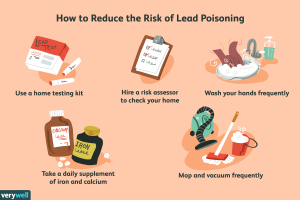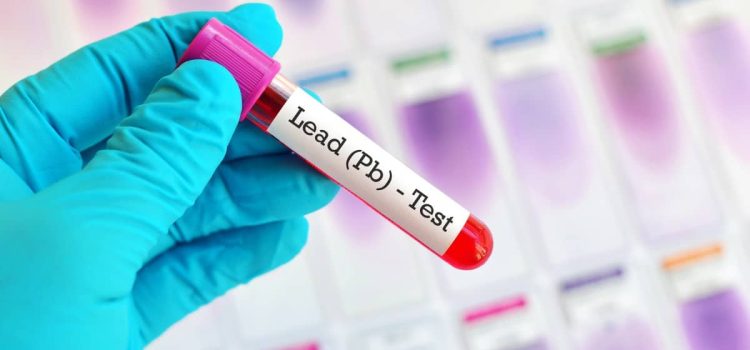
Tackling Lead Poisoning: Crucial Strategies for Families & Communities
Lead poisoning is an enduring threat, particularly affecting children and causing irreversible harm to their health and development. Dr. Allison Summers aims to guide local health departments, policymakers, and concerned parents in creating safer homes and communities through comprehensive insights and actionable strategies.
1. Understanding Lead Poisoning: Silent Dangers Lurking in Homes
Lead, a hidden menace, often lurks unnoticed in homes, posing severe health risks, especially to children. Understanding the sources and pathways of lead exposure is fundamental in addressing this issue.
Lead exposure often occurs through various sources, with the most common being lead-based paints used in older homes. The degradation of these paints can lead to lead dust and chips, which, when ingested or inhaled, can cause serious health issues, particularly in young children whose developing bodies are more susceptible to its toxic effects.
Additionally, lead can also be present in soil, water, and certain consumer products. Even low levels of exposure can lead to developmental delays, learning difficulties, and a range of health problems, underlining the necessity for increased awareness and preventive measures.
2. Impact on Children’s Health: Unveiling the Harsh Realities
Lead poisoning has a detrimental impact on children’s health, affecting their cognitive development and causing long-term health issues. It is crucial to understand the severe consequences that even small amounts of lead exposure can bring about.
Lead exposure has been linked to a range of health problems, including learning disabilities, behavioral issues, lower IQ, stunted growth, and damage to vital organs such as the brain and kidneys. Children under six years old are especially vulnerable, as their developing bodies absorb lead more readily and are more susceptible to its harmful effects.
The long-term consequences of lead poisoning highlight the urgency of addressing this issue, not only for individual families but also for the well-being of entire communities.
3. Sources of Lead Exposure: Identifying Hidden Risks
Uncovering the various sources of lead exposure is vital. Dr. Summers sheds light on unexpected culprits, from old paint in homes to contaminated soil, emphasizing the need for vigilance.
Apart from lead-based paints, other sources of lead exposure include contaminated soil, particularly around areas where leaded gasoline was once used or in regions close to industries that previously emitted lead into the air. Additionally, water delivered through lead pipes or plumbing fixtures can also pose a risk.
Consumer products such as imported toys, cosmetics, and certain folk remedies can contain lead, making it essential for parents to remain vigilant about their children’s belongings. Understanding these sources is crucial in mitigating exposure risks and protecting families from the hazards of lead poisoning.
4. Risk Mitigation Strategies: Steps to Protect Your Loved Ones
Providing actionable steps and preventive measures empowers families to create lead-safe environments and protect their children. Understanding how to reduce exposure and safeguard against lead poisoning is paramount in ensuring the well-being of our loved ones.
Several preventive measures can significantly reduce the risk of lead exposure:
- Regularly checking for deteriorating lead-based paint in older homes and promptly addressing any issues.
- Keeping living areas clean by frequent dusting and wet mopping to reduce the chances of ingesting lead-contaminated dust.
- Ensuring proper nutrition for children, as diets rich in iron, calcium, and vitamin C can help lower lead absorption.
- Using cold water for drinking and cooking, particularly in houses with lead pipes, to minimize lead exposure through water.
Adopting these strategies not only mitigates the risk of exposure but also plays a crucial role in creating a safer environment for children to thrive.
5. Role of Health Departments: Initiating Community-wide Safeguards
The crucial role of health departments in implementing programs and interventions is highlighted, fostering a community-wide shield against lead poisoning.
Health departments play a vital role in conducting lead risk assessments, providing educational resources, and coordinating testing and abatement programs. They can support the implementation of safe housing initiatives and regulations to prevent lead exposure, ultimately contributing to the overall health and safety of the community.
Collaboration between health departments and communities is essential to creating effective, well-informed policies and practices that protect the most vulnerable members of society.
6. Policy Implementation: Nurturing Safe Environments for Our Children
Implementing policies and regulations to reduce lead exposure is crucial. Dr. Summers emphasizes the role of policymakers in creating safer environments for families.
Policy implementation involves a multi-faceted approach, including regulations for lead abatement in homes, strict standards for consumer products, and the promotion of lead-safe practices in various industries. Supportive policies are critical in preventing new cases of lead poisoning and safeguarding children’s health.
7. Parental Vigilance: Practical Tips for Lead-Safe Homes
Empowering parents with practical tips to create a safe haven for their children, ensuring vigilance against lead exposure at home, is crucial.
Parents should be proactive in ensuring a safe environment by conducting regular checks for potential lead sources in their homes, maintaining cleanliness, and being vigilant about the products and materials their children interact with daily.
8. Testing and Intervention: Early Detection Saves Lives
Early detection through testing and swift intervention is emphasized as a pivotal strategy in mitigating lead poisoning’s harmful effects.
Regular blood lead level testing for children, especially those living in older homes or at higher risk of exposure, is crucial. Early detection enables timely intervention and reduces the risk of severe health impacts. Healthcare providers play a pivotal role in offering guidance and support for families in managing and addressing lead exposure.
9. Community Engagement: Uniting Efforts for Safer Neighborhoods
Encouraging community engagement and collaborative efforts is crucial in achieving a lead-free environment for our children.
Communities should come together to raise awareness, share resources, and support initiatives aimed at eradicating lead exposure. Collaborative efforts, such as community cleanup events and educational workshops, can significantly contribute to a safer and healthier neighborhood.

Incorporating informative content and actionable insights, Dr. Allison Summers’ article serves as a comprehensive guide for local health departments, policymakers, and concerned parents in their battle against lead poisoning. Focused on awareness and prevention strategies, this piece provides the necessary tools to ensure the safety and well-being of our communities’ most vulnerable members.
With a deeper understanding of lead poisoning’s sources, its impact on children’s health, risk mitigation strategies, the role of health departments, policy implementation, parental vigilance, testing and intervention, and community engagement, stakeholders are empowered to take essential steps towards creating lead-free environments.
Awareness and preventive measures are the key to safeguarding our families and communities. By joining forces and implementing these crucial strategies, we can collectively mitigate the risks of lead poisoning and ensure a healthier, safer future for our children.










